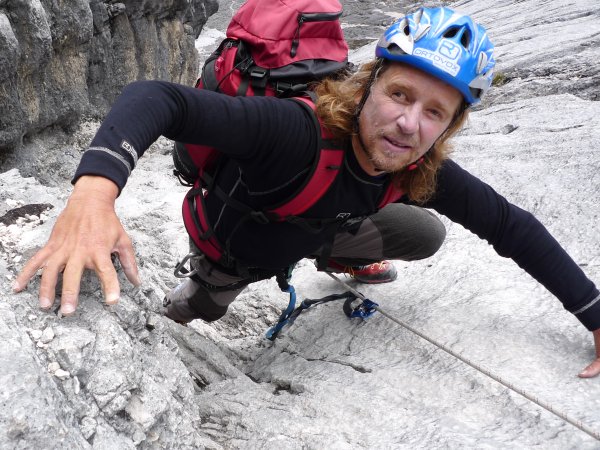The Austrian Andy Holzer is one of two mountaineers in the world who have climbed Mount Everest without having eyesight. However, the 53-year-old and the American Eric Weihenmayer are anything but competitors. "We share the planet between us on this subject," Holzer explains during a telephone call.
The Austrian extreme sportsman is a winner. During our almost two-hour conversation this becomes clear again and again. For him there are no limits, no obstacles, no handicap. Holzer wants 100 percent at all times of his life. "Many people don't know what they can actually do. I'm sure that many people can get much more out of themselves and don't realize it themselves," he explains. His voice seems energetic and determined. He knows what he can do and he has made it his life's work to constantly face new challenges. Despite his blindness, it is important to him to achive things that others cannot see despite functioning eyesight.
How do you think differently? What are the perspectives and alternatives in every situation in life? Holzer is not shy of big comparisons. Elon Musk, Steve Jobs or Mark Zuckerberg, they all would never have made it this far if they hadn't looked beyond their horizons. He's convinced of that.
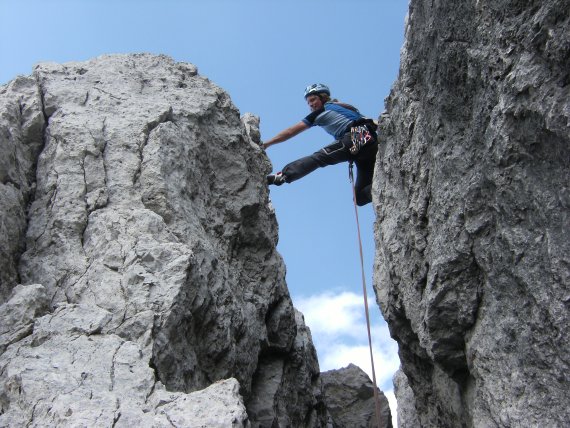
"We have very little time on this planet," says the trained masseur. "So why shouldn't I always want higher, faster, just want more?" Envy and resentment are alien words for Holzer. Such emotions are a waste of energy: "We all don't need something like that from each other." His friend Eric already climbed Mount Everest in 2001 as a blind climber, long before him. In 2001 Holzer was still working as a curative masseur. He felt his way into climbing and mountaineering
Anyway, he has the perfect place to live for his passion. Because the 53-year-old lives at the foot of the Dolomites, in Lienz. In 2004 he climbed the so-called "yellow edge". Many tours have burned themselves into his memories. Among them many setbacks. In 2014 he ventured into the Champions League of extreme mountaineers for the first time. Accompanied by a German camera team, he wanted to climb Mount Everest. Like his buddy Eric Weihenmayer 13 years earlier. But an ice avalanche finally brought the crew to a halt. Only one year later Holzer tried again. An earthquake in Nepal with almost 9,000 dead prevented him from succeeding this time too. He still can hardly find words for the tragedy that took place at that time: "It was the madness of all the rubble that went off at that time."
By this time his life had already changed dramatically. The media attention around his person overtaxed him. Giving interviews at 10 am was not on his agenda until then. "You don't get to go hiking until 11 o'clock," he says angrily and laughs heartily during the conversation. He did not feel comfortable in the presence of cameras for a long time. Moreover, he was suddenly recognized by complete strangers at airports, such as Amsterdam or Cologne.
After his two failed attempts to climb the highest mountain on earth in the Himalayas, he was drawn to Antarctica and Madagascar in 2016. But from one day to the next he was back again: the desire to conquer this one summit. No sooner said than done!
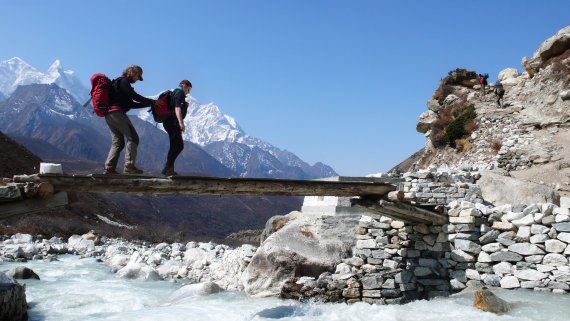
In 2017 he started attempt number three: Even before he took the last steps towards the summit on 21 May 2017, he received tragic news. His father had passed away. Holzer didn't stop, he didn't turn back. He reached his goal and is now the second climber without eyesight to climb Mount Everest. When Holzer talks about his thoughts and memories at this moment, his voice lowers, he becomes profound: "They say, not without reason, that Everest is the bridge to heaven. Life is different there. And above all, it is not as safe as we always imagine it to be in our small, intact world."
Holzer achieved an immense physical and mental achievement. The reactions of many fellow men annoyed him. "You had oxygen with you, didn't you?" was a frequently asked question. As if that would diminish his performance. "Many have underestimated what I have accomplished. I don't understand something like that. I am the second person who has climbed Mount Everest without the help of light. Where does this envy and resentment come from," he says angrily. The pressure is a problem even for the otherwise so established athlete.
He says that at that time he tried to breathe without additional oxygen at the summit. He lasted 10 minutes. "That was funny. It's like someone taking off your jacket," he explains his feeling.
The crucial difference between Andy Holzer and other mountaineers is obvious: Holzer is dependent on his companions. When walking, he hears the crampons in front of him and thus follows the steps of the people in front of him. He must not be more than five metres away from them. Otherwise the acoustics will be distorted. Especially on extreme mountain tours, it is of enormous importance that he and his companions walk at the same pace, have the same rhythm. In addition, the hikers must constantly maintain a brisk pace without overexerting themselves. Holzer explains: "You have to walk quickly so that you don't freeze to death. But not too fast either, or you'll get knocked out."
Holzer lives a distinct pragmatism. What he wants to say, he says directly, without beating about the bush. With this rational way of thinking he also makes personal decisions. In 2009, he faced a turning point in his life: "What other professions can I pursue without seeing, I asked myself. Telephone operator, brush maker, basket weaver, these are the typical professions for blind people. Although many people at that time thought he was crazy, he quit his job as a curative masseur after 26 years and started giving lectures: "Open the eyes of the sighted". That's his credo.
For some it may sound ironic, even macabre or arrogant, for others it may sound perfectly logical. Blind people often compensate for their lack of sight with a pronounced sense of hearing. Of course they "see" things completely differently, have a different feeling for certain situations. Andy Holzer felt that there must be more to his life, that he can do more with his time and that a unique potential lies dormant in him.
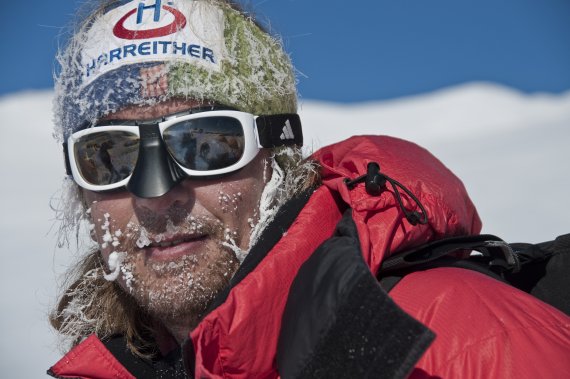
After his failed attempts to climb Mount Everest, a friend told him: "Cool that you failed again. It's part of your story now." Holzer agreed. He was a stand-up character.
This also helped him after a bitter blow of fate in January 2019, when he was seriously injured in an accident while doing DIY. His right index finger had to be amputated. He won't let that get him down, quite the contrary. His passionate dedication to outdoor adventure remains. Holzer reacts with his usual pragmatism. Since the accident there have been at least 30 wins in his life again. He has the winning feeling in him and not the feeling of being a loser.
There is one thing that the athlete has undoubtedly taken away: His assertiveness. He laughs heartily in conversation and says, "Winning is just awesome."
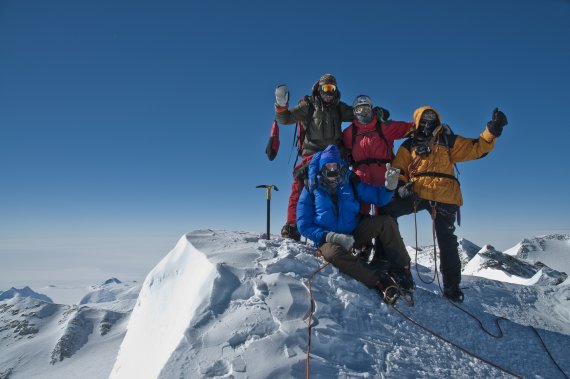

 Sports BusinessSki Mountaineering Goes Olympic: What Milano-Cortina 2026 Means
Sports BusinessSki Mountaineering Goes Olympic: What Milano-Cortina 2026 Means
- ISPO awards
- Mountain sports
- Bike
- Design
- Retail
- Fitness
- Health
- ISPO Job Market
- ISPO Munich
- ISPO Shanghai
- Running
- Brands
- Sustainability
- Olympia
- OutDoor
- Promotion
- Sports Business
- ISPO Textrends
- Triathlon
- Water sports
- Winter sports
- eSports
- SportsTech
- OutDoor by ISPO
- Heroes
- Transformation
- Sport Fashion
- Urban Culture
- Challenges of a CEO
- Trade fairs
- Sports
- Find the Balance
- Product reviews
- Newsletter Exclusive Area
- Magazine
